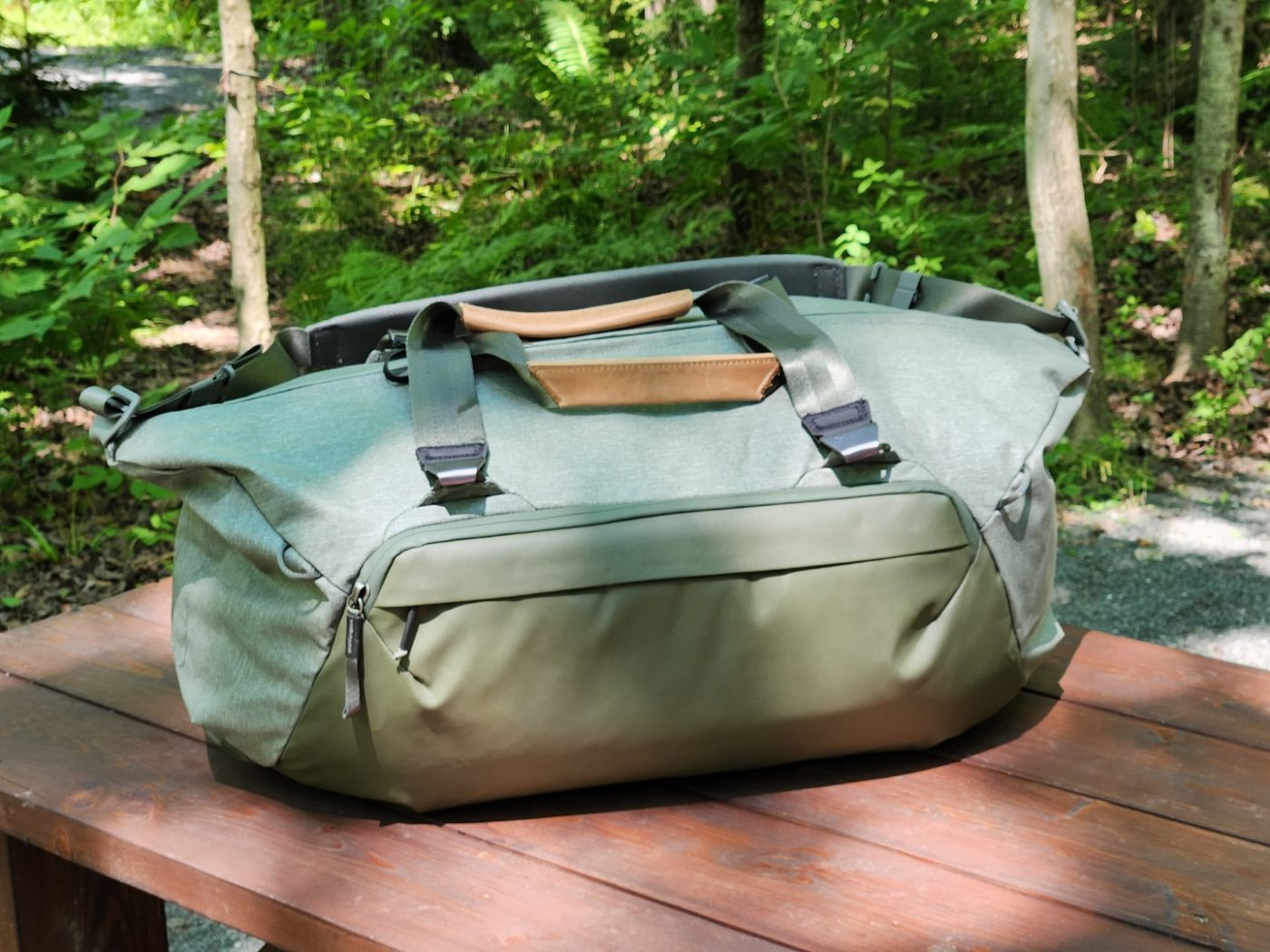In this review I look at the newly released Peak Design Duffel 50L bag and its accessories from the viewpoint of photographers going on location.
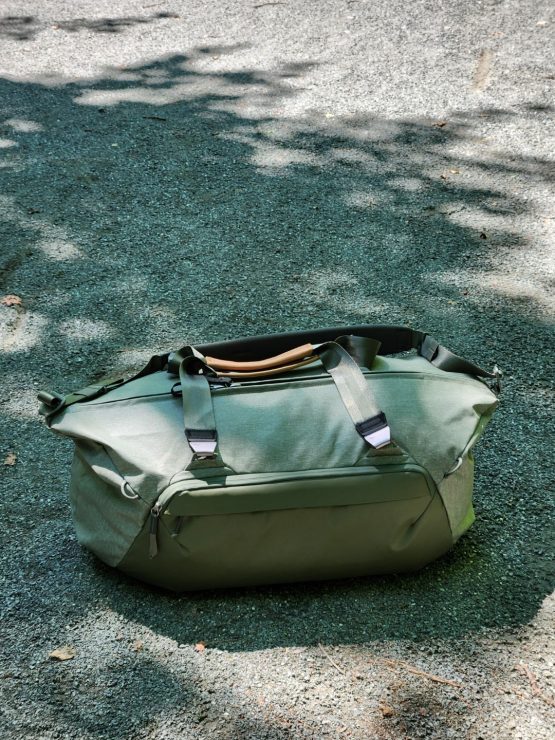
I have been using Peak Design products for a while. I particularly like the multiple ways their bags can be customized to adapt to various situations. In particular, their travel bags are modular and can easily adapt to a variety of situations.
One missing link, in my view, was a bag sitting between their Travel Backpack or Duffel 35L (both of which contain roughly the same volume) and the huge 65L they also offer. The latter is too large for many scenarios (a reason why I don’t own it) and the former two have a good volume for a solo trip or a photographer going on location with a limited amount of gear. A couple traveling together or a photographer carrying several strobes will soon reach the limits of the 35L bags, however.
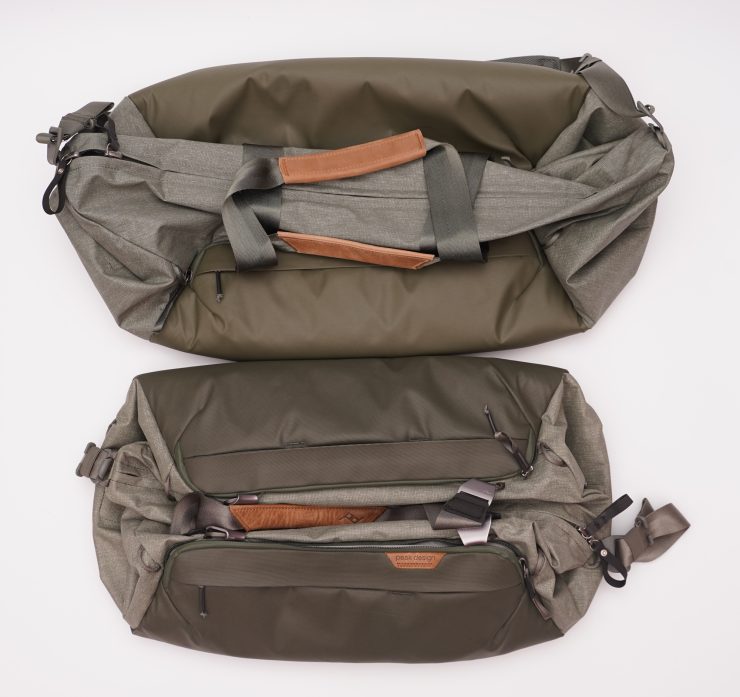
This is why I was particularly happy to see Peak Design release a 50L duffel bag. This bag hits a sweet spot size-wise, with a volume reaching the limit of carry-on volumes for North American air companies. While other Peak Design bags can take 3 of the company’s “packing units” (a packing unit corresponds to a small packing cube or camera cube), the new duffel takes 4 packing units with room to spare at both ends and more at the top, over any items placed at the bottom.
In this review, I take a look at the new duffel, as well as some accessories launched at the same time, namely a new Small Tech Pouch and new Ultralight Packing Cubes.
Duffel 50L
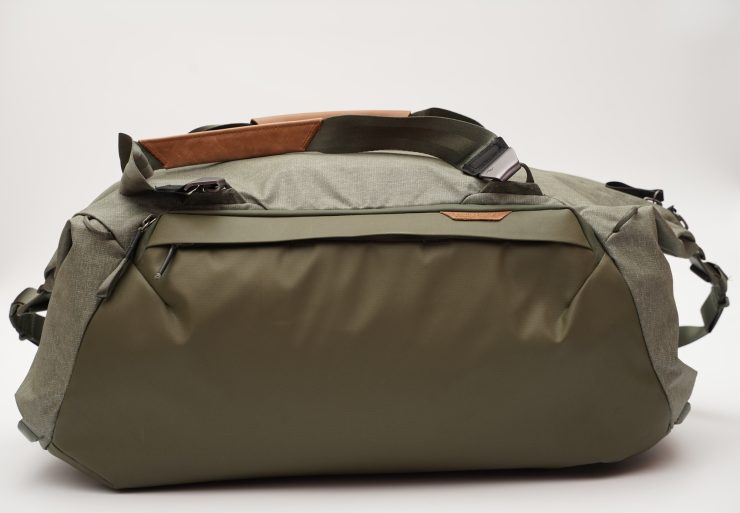
The new Duffel 50L offers the same features as the previous smaller version. It is available in black or Sage (green). The duffel has a reinforced bottom and weatherproof fabric all around. Each side sports two long pockets, one smaller and slimmer, and a second one taller and a bit wider. I would still like to see this taller pocket expand a bit more outwards to hold bulkier items such as a water bottle.
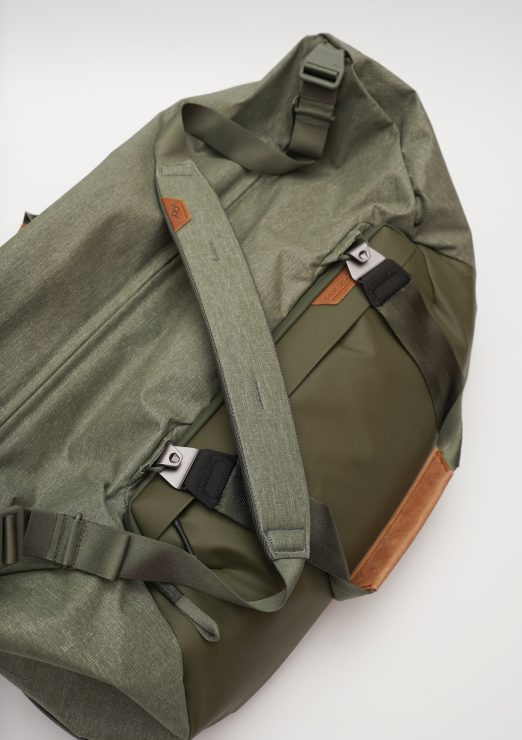
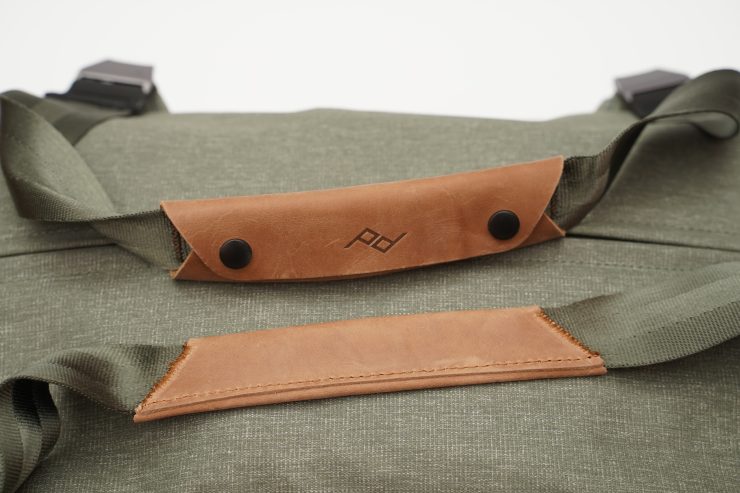
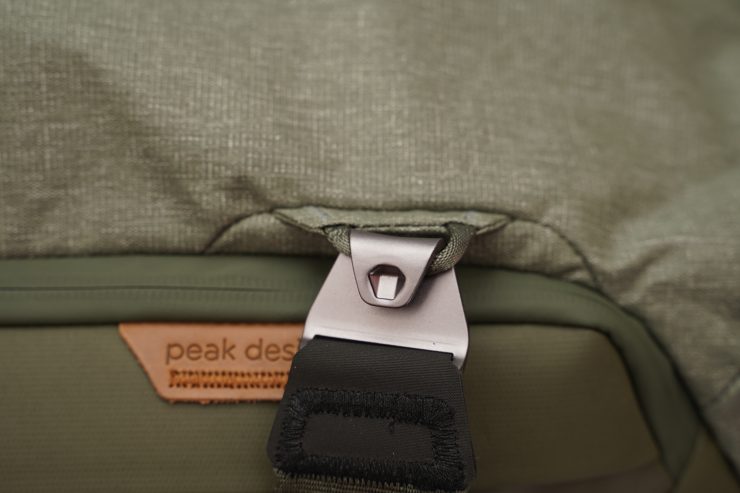
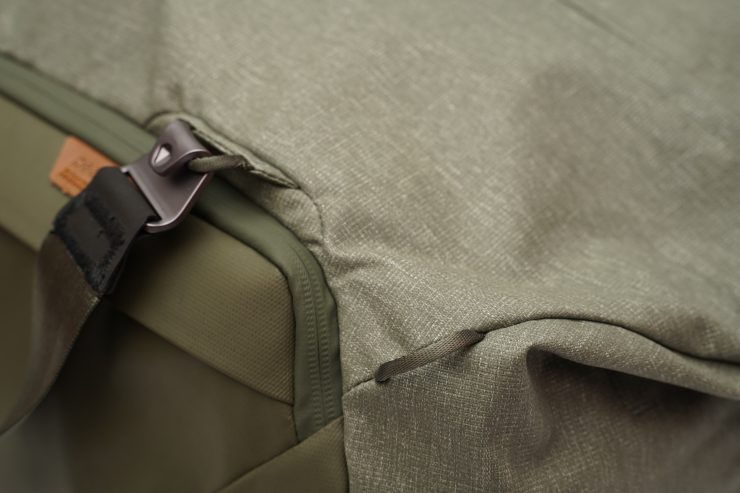
The bag comes with a removable shoulder strap, and two removable grab handles. Several loops distributed around the bag offer many attachment options. The grab handles can be positioned to serve as makeshift backpack straps, for instance. Prior iterations of these handles attached together magnetically, but this new version takes a more traditional approach, with the use of snap-buttons instead. One small design flaw is that these handles tend to fall down on the sides, blocking the path of the external pockets’ zippers.
The shoulder strap, nicely padded, can be positioned at will to better distribute the weight.
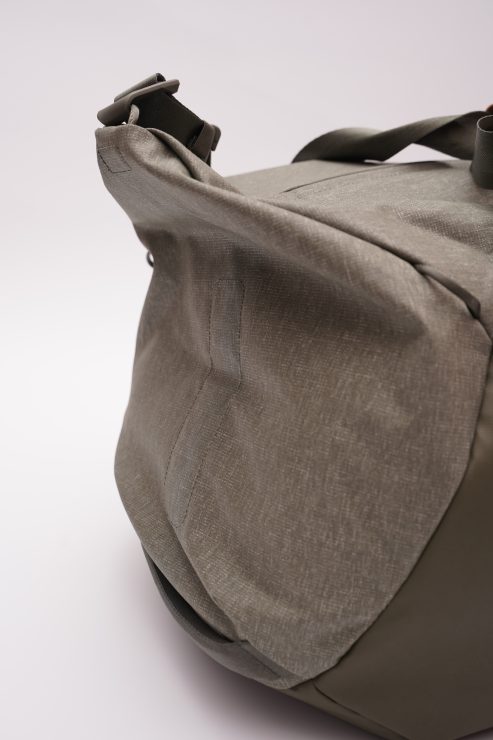
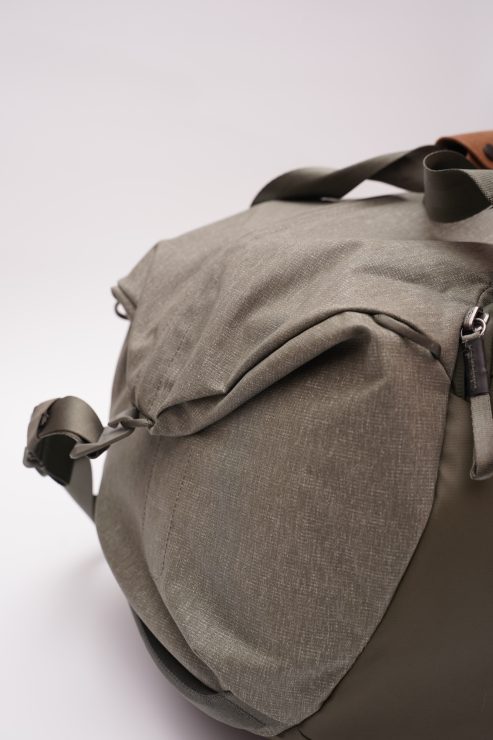
Magnets are present at both ends. If the duffel is only partially filled, it can fold down and the magnets hold it in place, taking up less space.
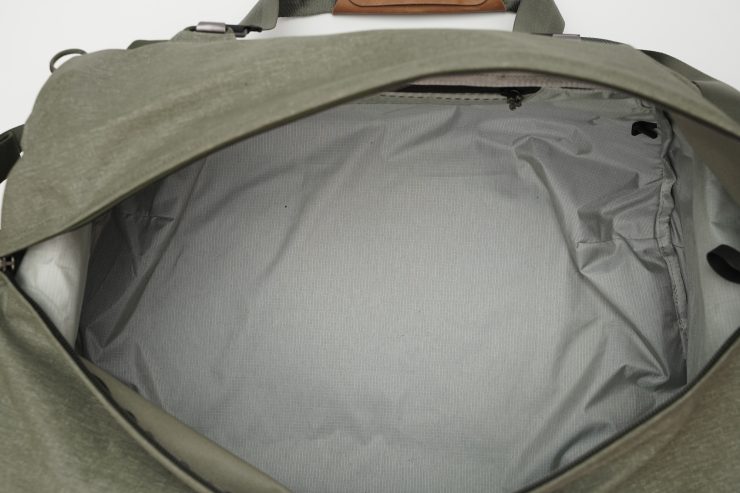
The opening is wide and stiff thanks to rods slipped inside the fabric. I still wish the opening was even wider especially near the ends.
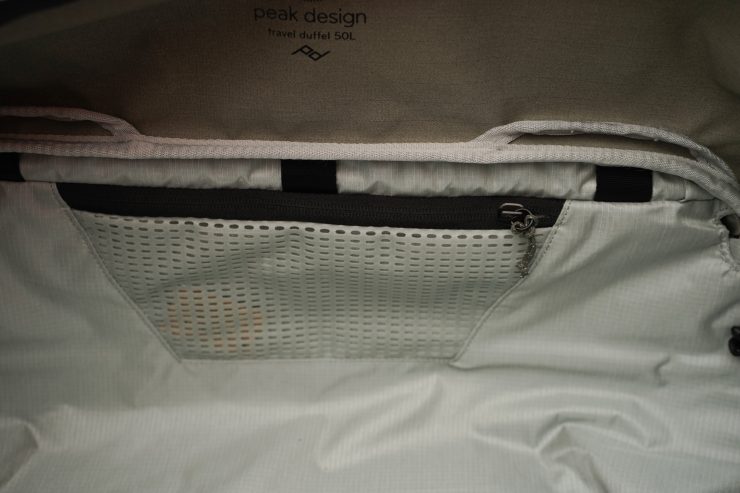
Inside, the duffel is mostly one huge volume. There are small mesh pockets on each side, but that’s it. The pale fabric makes it easy to see the content.
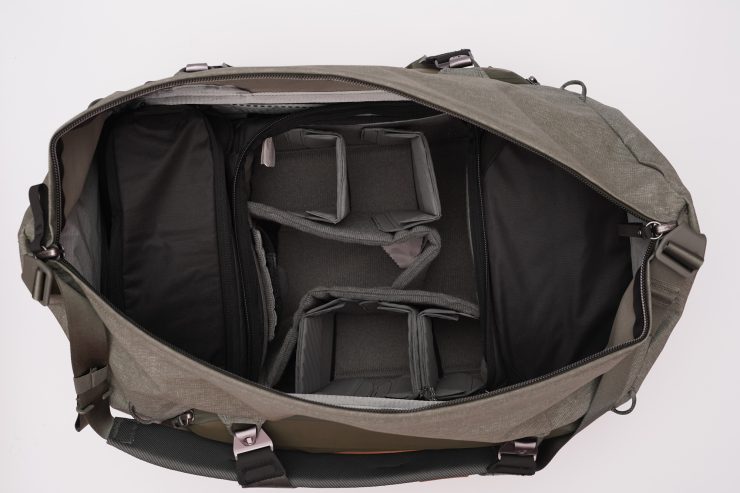
The duffel can serve as a “throw-anything-inside” bag, but shines when used together with Peak Design’s organization tools. The picture above shows the duffiel filled with a medium camera cube (center) and two small camera cubes (v1 and v2) on the sides. This configuration easily let me carry all my equipment to shoot with studio equipment on location.
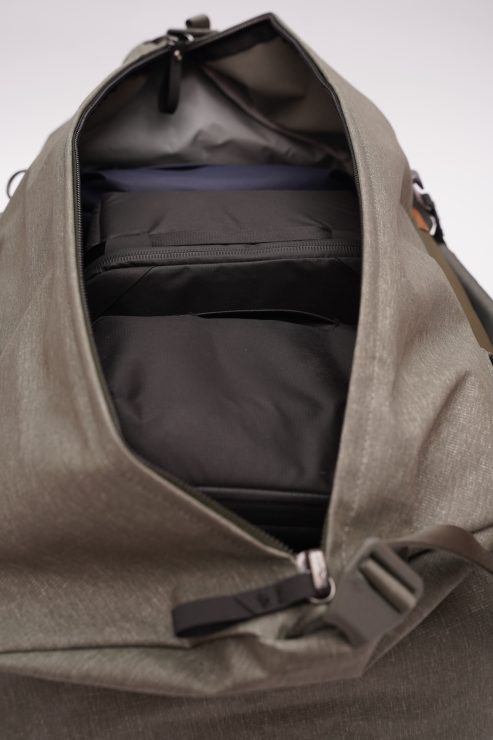
The extra space at the top is also welcome. In addition to the bottom camera cubes, I was able to include a regular Tech Pouch, a Small Tech Pouch, and an X-Small camera cube with room to spare.
Small Tech Pouch
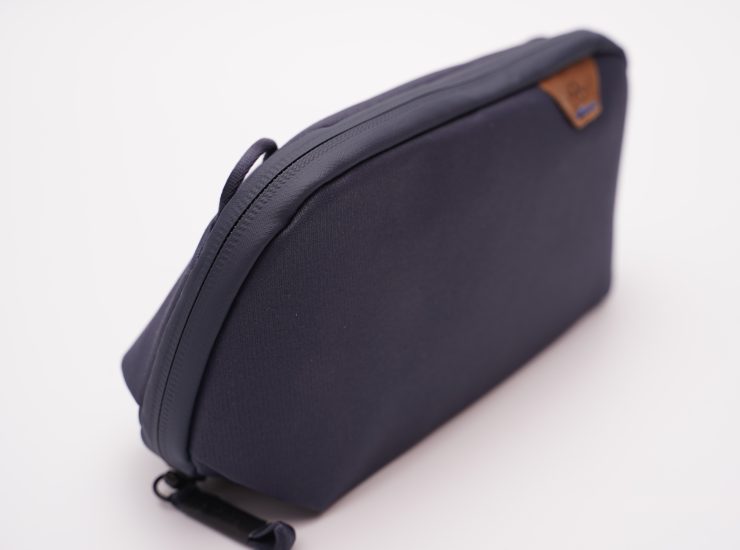
Peak Design puts a lot of thought on how to optimize organization. The Small Tech Pouch is a fine example of that.
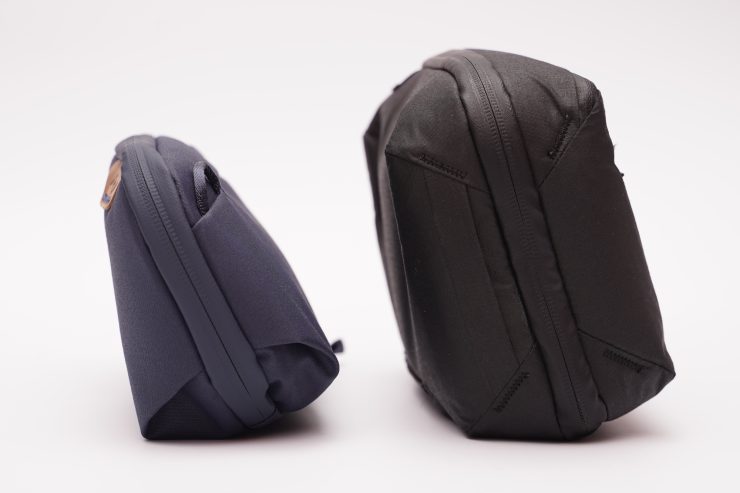
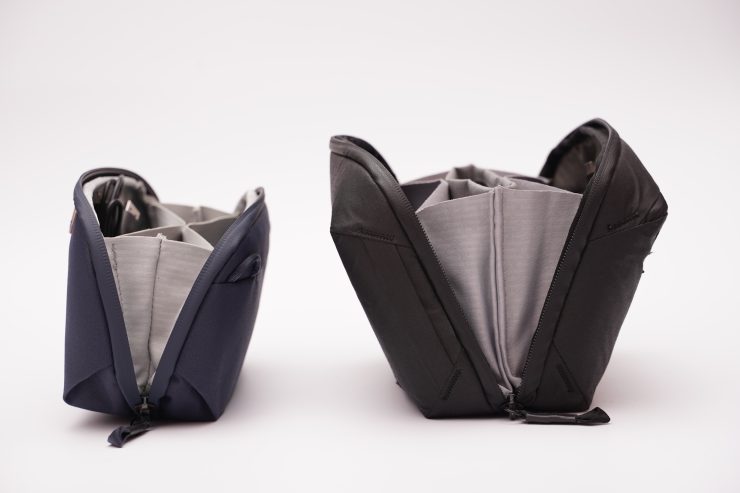
Despite having used and tested tech pouches from several manufacturers, I always come back to Peak Design’s. The “origami” internal organization is peerless, and my favorite. Despite this, the original can be too big in some cases.
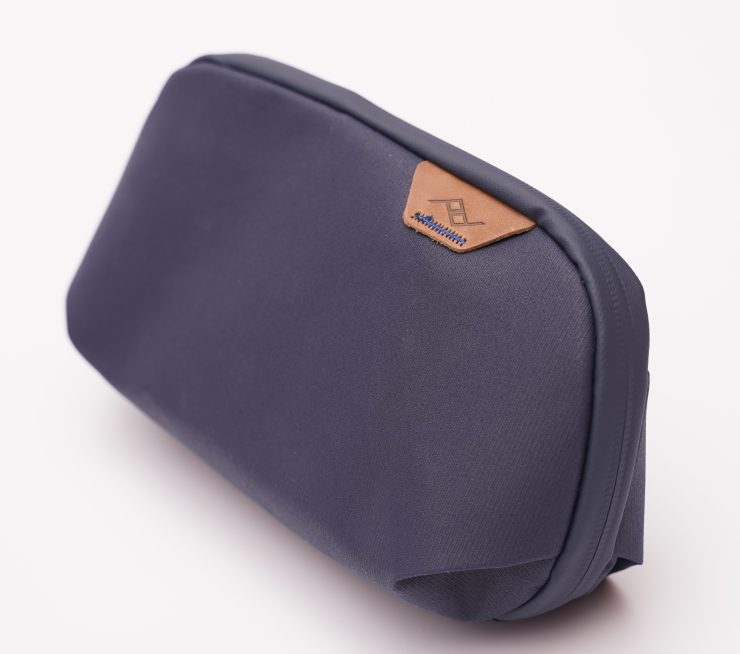
The new Small version keeps the same design logic, but changes a few things in addition to the size difference. Firstly, it has a triangular shape’ with a larger bottom.
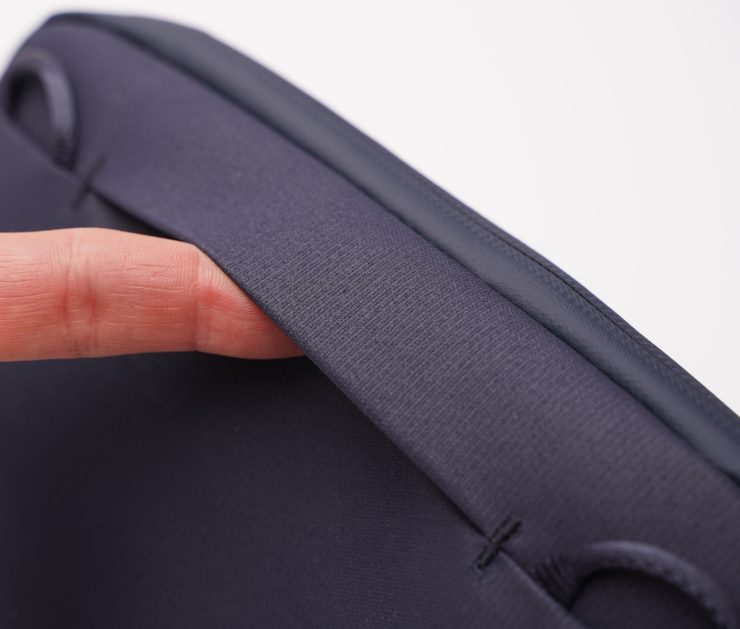
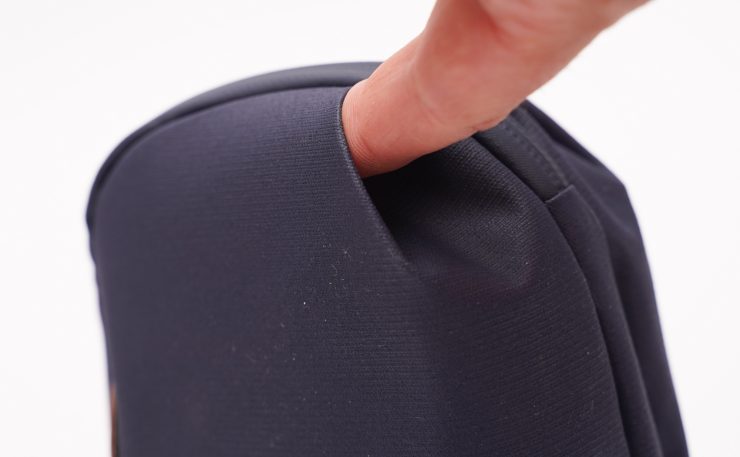
Second, instead of handles all around, it has one handle on one side, and holes to insert a finger and pull out the pouch. I do miss the bottom handles present on the larger version, as they made it easy to hold the pouch in your palm.
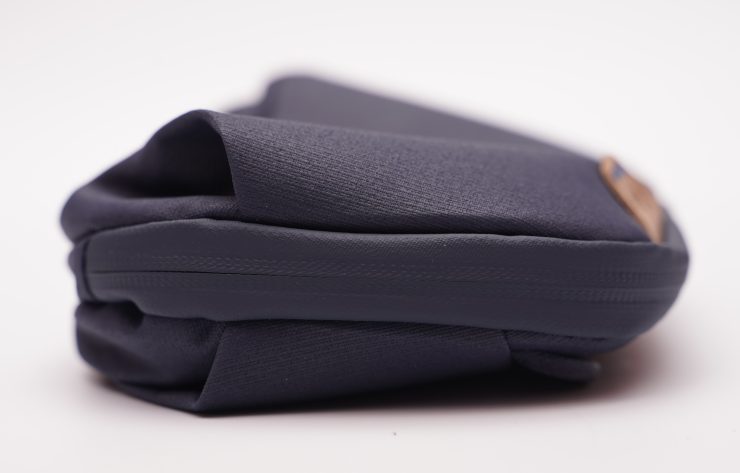
One other key differentiator is that, when empty, the Small Tech Pouch can be compressed. It will thus adapt more easily to different bag types, and free up more space.
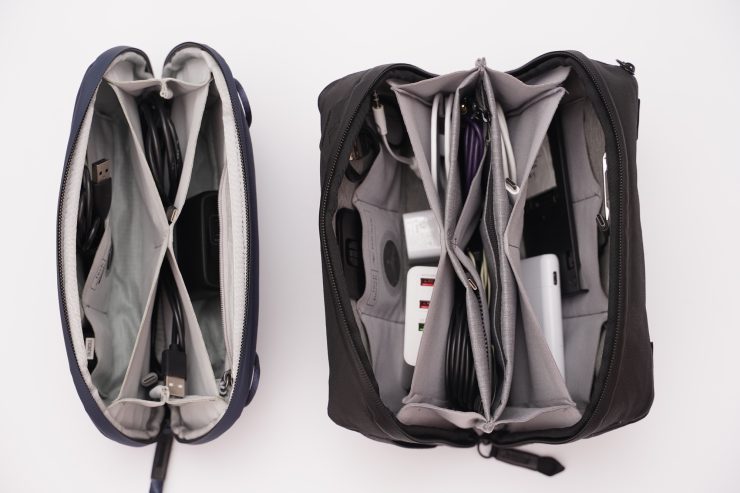
Inside, the pouch is similar, if smaller, than its sibling. The space is divided into triangular sections which expand when cables are inserted. This simple design is excellent: simply push the cables inside without worrying about straps, velcro, elastic bands or anything else. It’s fast and it just works.
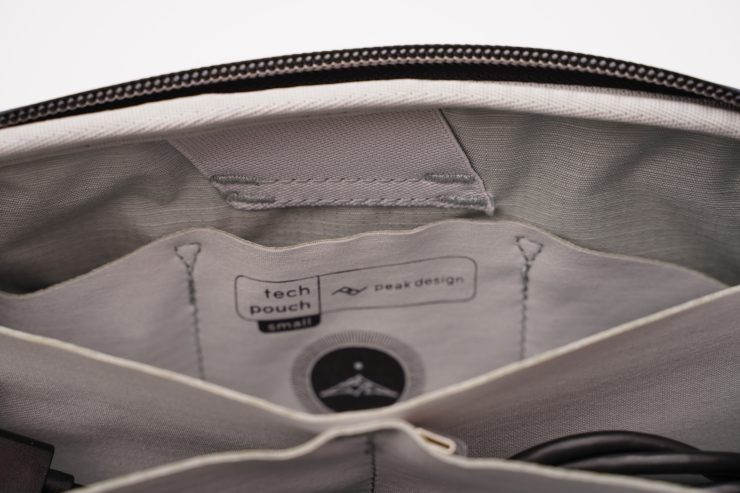
The pouch has other divisions: a zippered pocked and tiny side pockets for memory cards and other small items. There is a pen holder near the top. Larger sections accommodate charging bricks, batteries, etc.
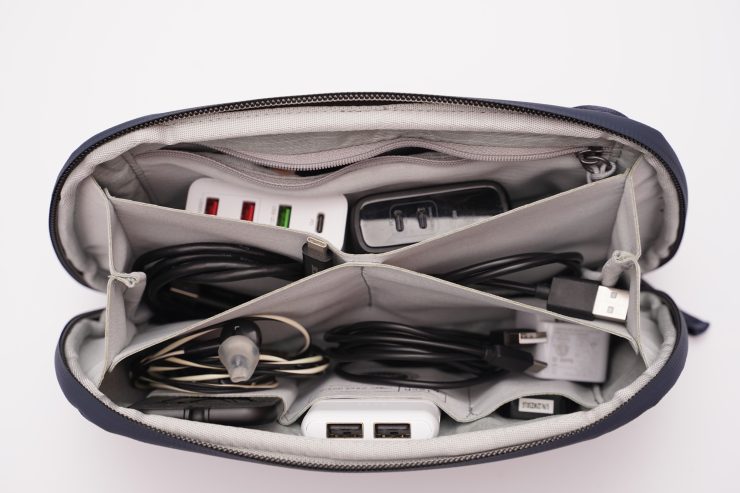
The Small Tech Pouch is surprisingly roomy. As seen on the picture above, I was able to easily insert all the equipment I would need for 1-2 people and their electronic needs. The pouch wasn’t even completely full.
Ultralight Packing Cubes
Packing cubes can seem as an afterthought for many people. However, in typical Peak Design fashion, these new Ultralight packing cubes bring new elements to the market.
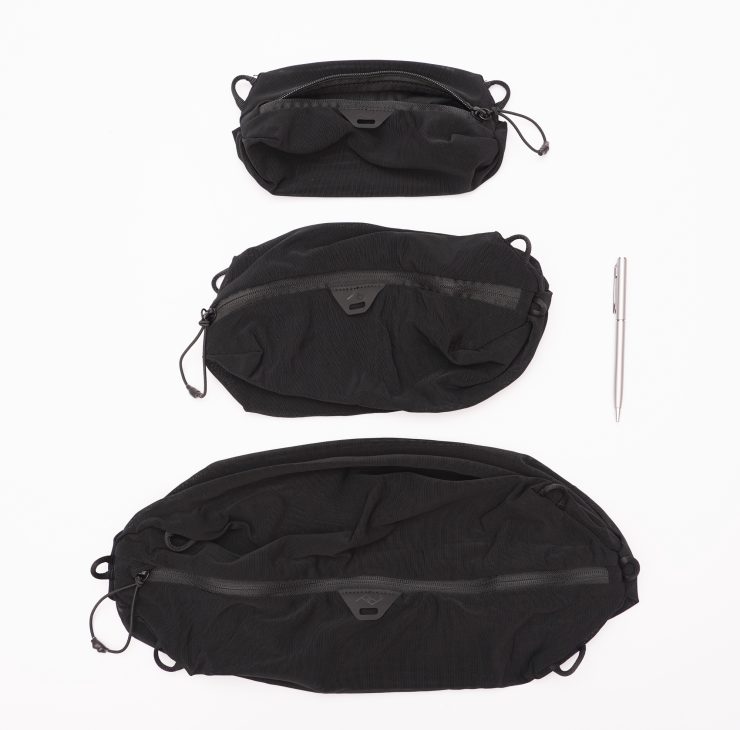
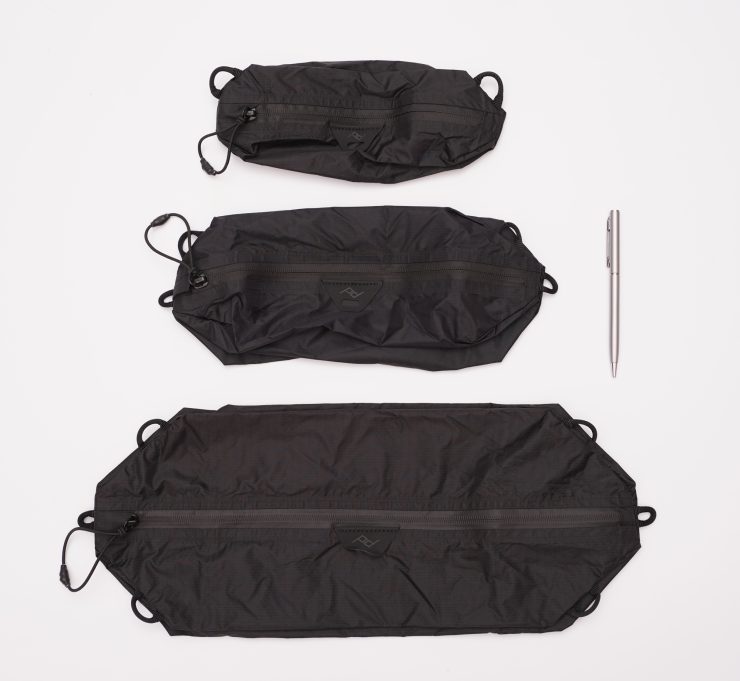
The Ultralight packing cubes come in two flavors: waterproof or breathable. The latter uses an expanding mesh while the former uses a stiffer fabric. They come in three sizes: XX-Small (1 liter), X-Small (2.5 liters) and Small (10 liters). The mesh cubes are slightly larger (1-3-12 liters) and can double their size by stretching. They come in four colors: black, cloud (white), sage (green) and eclipse (red).
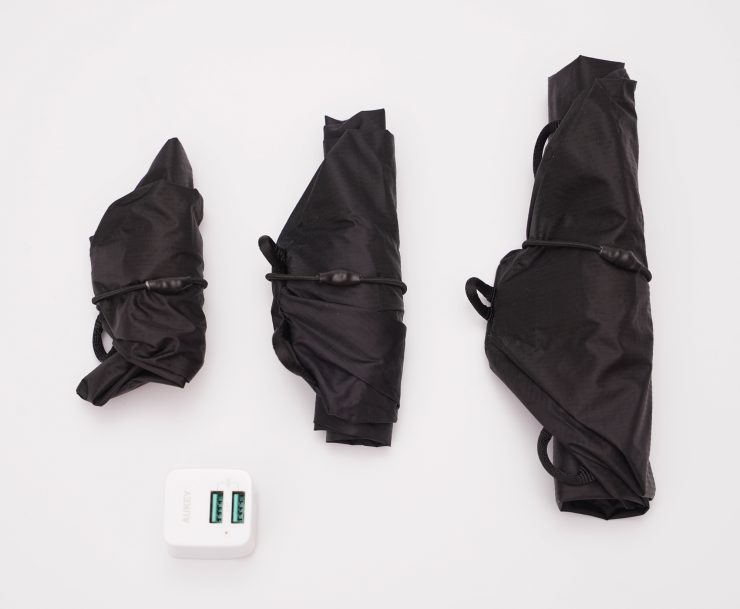
The cubes all feature the same characteristics. They can be rolled into small cylinders when empty, held in place via the zipper pull.
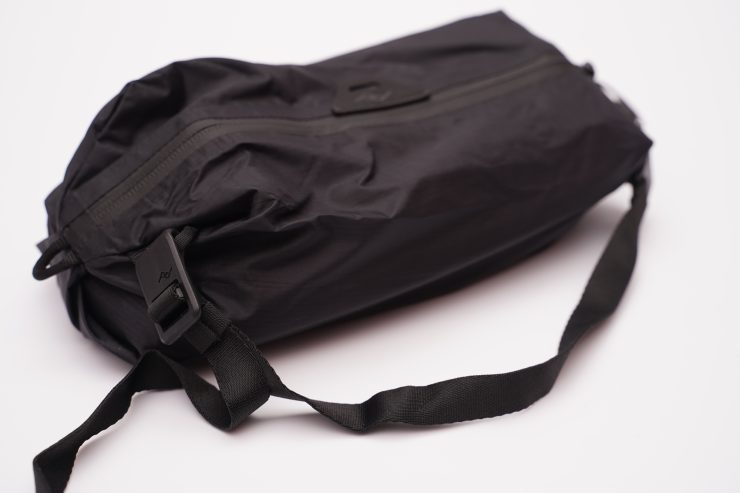
Two hoops allow them to be used as small sling bags by attaching an optional shoulder strap.
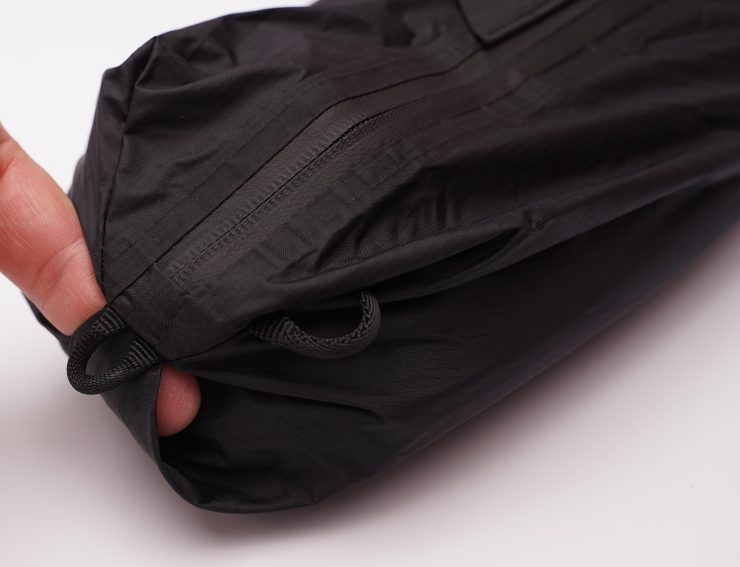
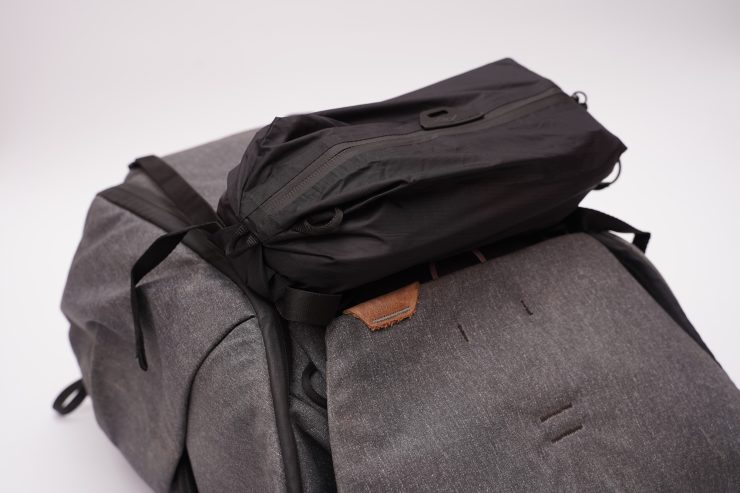
Pass-throughs at each end let the user mount them externally on a backpack, such as Peak Design’s Everyday Backpack above.
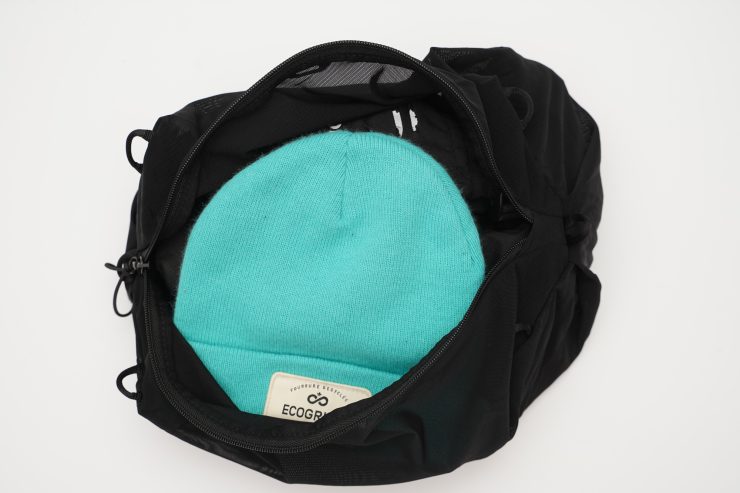
Typically, packing cubes are meant to remain roughly rectangular in order to organize clothes in a suitcase. the Ultralight packing cubes are a bit different. They do not offer compression zippers, and their shape isn’t typical. They are not truly meant to be filled to the brink, but rather to organize odds and ends inside a bag. The mesh option can be useful to bring toiletries in a shower or carry a wet towel. The waterproof option can hold shoes or serve as a container for random odds-and-ends. Both can of course carry clothes. I have used them to carry lightstand accessories so they wouldn’t move around my bag.
In Use
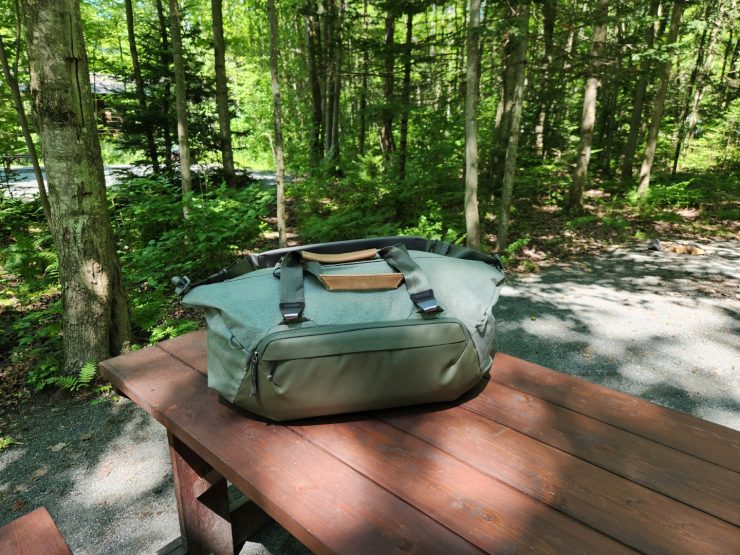
To me, the key perk of using a bag such as the Duffel 50L is how it optimizes capacity. This isn’t to say “bigger is better”. A bigger bag, if not well optimized, doesn’t make it easier to carry more stuff and keep it organized. This is where this new bag excels.
The new duffel has the same width as other Peak Design bags. It is longer, which allows one extra packing unit to be inserted. When bringing several camera bodies, lenses, strobes and speedlights on location, this is a godsent. The extra space above can be put to good use also. I have found it convenient to carry a Tech Pouch and an Ultralight packing cube (filled with light stand accessories, batteries, etc). I have not found myself needing to go on location overnight since getting the Duffel 50L, but the extra volume could easily hold a change of clothes (maybe inside one or two medium packing cubes put side by side) and a wash pouch.
A couple traveling together and needing little or no camera equipment will easily be able to store all their clothes and items inside the Duffel 50L.
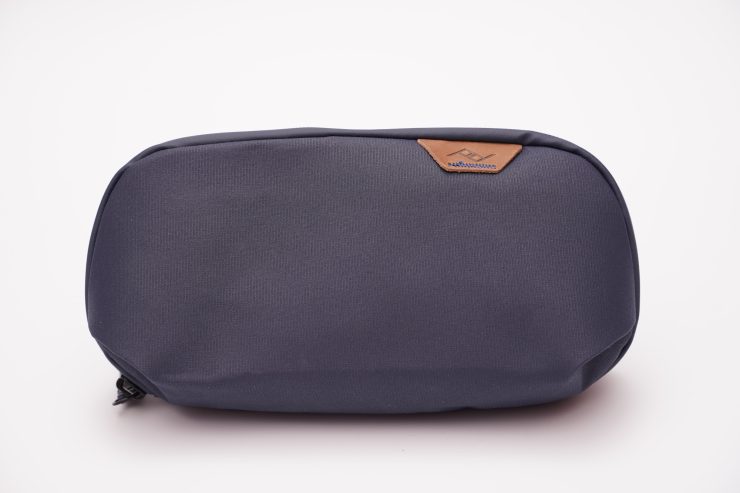
The new Small Tech Pouch is also a welcome addition. I love the original Tech Pouch and use it often when traveling with my family. It can store chargers, cables, batteries and extras for everyone in my party. However, when traveling alone, it is often too big. The new Small Tech Pouch holds a surprising amount of gear, but has two advantages: it is smaller, and it can be compressed, contrary to the original pouch.
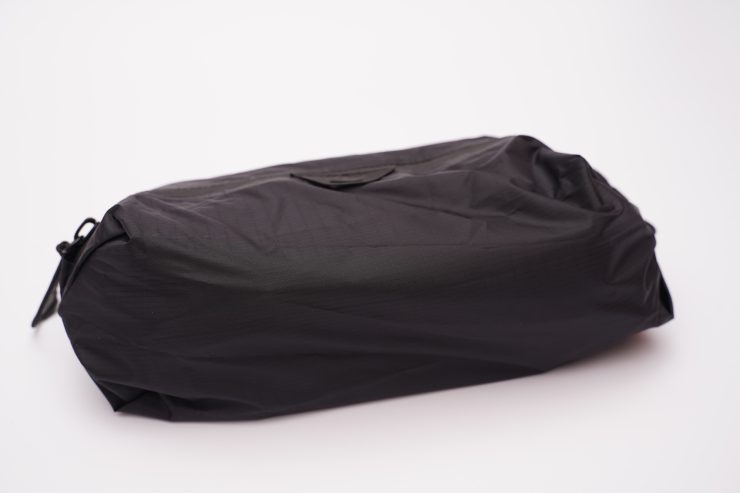
I like the idea of the new Ultralight Packing Cubes. One is fully weatherproof, the other is breathable. I like that there are now much smaller options. and that they can be attached to the outside of a bag. Regardless, they are probably the least useful (to me) new additions to Peak Design’s lineup. They are not meant to be stuffed to the brink like the original packing cubes (which can compress after being filled). As such, they can be useful to gather odds-and-ends together and prevent them from moving around a bag, but they won’t contribute to maximizing internal volume. I also don’t see myself wearing such a pouch as a sling, despite the loops present on them.
Summary
There is no shortage of options for photography bags. Backpacks, slings, duffels and cases all serve different purposes. A huge bag lets you bring everything, but can be too cumbersome. A smaller bag forces you to streamline and bring only what’s essential.
the Duffel 50L from Peak Design strikes a good balance that was missing in my view. Without going overboard, it lets me carry more gear than a typical camera bag. When traveling with less equipment, I can easily use the Duffel 50L both for my photo equipment and personal items.
The addition of the Small Tech Pouch is welcome, as the large size was my only gripe with the original Tech Pouch.
The Ultralight Packing Cubes are interesting and flesh out Peak Design’s line of travel equipment, but they won’t ever be my most-used items. I prefer typical packing cubes for clothes, and more robust pouches for accessories. I see the point, and will certainly use them from time to time, but they are not the best fit for my style.
Peak Design’s products are all available directly from Peak Design’s website or their Amazon Store, and most of them can be found at B&H photo, Adorama, and Moment.

